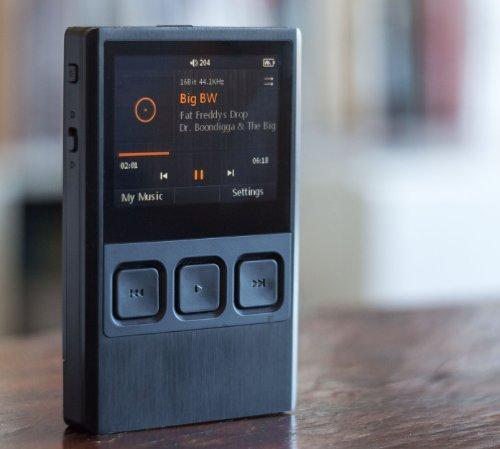since there are a number of other reviews describing this dap, its layout, ui, etc, i will confine myself to some observations about sq and relative value.
my main points of comparison are the ibasso dx90- the first dap i got, and the questyle qp1r- the last dap i got. the n6 was in between in every sense:
1. bass - it was only after i listened to the n6 that i realized that the dx90 bass was somewhat loose and bloated. the n6 has a tightly controlled bass with rich tone and deep extension.
2. mids- solid mids, in no way recessed, with rich tone.
3. treble- i am a little dissatisfied with the n6's treble. it has good extension but is thin and lacks much texture. this was made clear to me when i got the qp1r, which has a richer treble.
4. soundstage- i agree with those who describe the n6's soundstage as very wide but not very deep.
5. imaging- the n6 provides terrific placement of each source. there is a sense of air around each instrument, as if there is a space surrounding each instrument as a kind of frame. this is in contrast with both the dx90 and the qp1r. the dx90 sounds a bit congested when a/b'd with the n6. the qp1r doesn't have that air framing each source. it is not congested, but it is as if the sound exactly fills the space.
6. value- the dx90 is solid value at $400. at times the n6 is available for $500 - see the price graph at camelcamelcamel dot com. if you want the n6 at that price you can set a price alarm there. that's how i bought mine, and i think that for $500 the n6 is an even greater value than the dx90. this assumes you don't mind the bigger form factor, the heavier weight, and the ability to swap batteries. the qp1r has the best sq, but costs $900. there are people in the qp1 thread saying that they perceive the qp1r as having better sq than than the ak240. but if you're shopping in the high end realms of the 901s, the ak240, and the lotoo paw gold, then you're probably not even reading this review, but if you are you should consider the qp1r. if, otoh, you are comparing daps in the dx90 price range relative to the n6 at $500, remember that the n6 gives you terrific sound with enormous bang for the buck. if you are comparing the dx90 @400 to the n6 at the $600 it usually sells for, then it's more a value judgement. the n6 definitely has the better sq but is 50% more expensive.
my main points of comparison are the ibasso dx90- the first dap i got, and the questyle qp1r- the last dap i got. the n6 was in between in every sense:
1. bass - it was only after i listened to the n6 that i realized that the dx90 bass was somewhat loose and bloated. the n6 has a tightly controlled bass with rich tone and deep extension.
2. mids- solid mids, in no way recessed, with rich tone.
3. treble- i am a little dissatisfied with the n6's treble. it has good extension but is thin and lacks much texture. this was made clear to me when i got the qp1r, which has a richer treble.
4. soundstage- i agree with those who describe the n6's soundstage as very wide but not very deep.
5. imaging- the n6 provides terrific placement of each source. there is a sense of air around each instrument, as if there is a space surrounding each instrument as a kind of frame. this is in contrast with both the dx90 and the qp1r. the dx90 sounds a bit congested when a/b'd with the n6. the qp1r doesn't have that air framing each source. it is not congested, but it is as if the sound exactly fills the space.
6. value- the dx90 is solid value at $400. at times the n6 is available for $500 - see the price graph at camelcamelcamel dot com. if you want the n6 at that price you can set a price alarm there. that's how i bought mine, and i think that for $500 the n6 is an even greater value than the dx90. this assumes you don't mind the bigger form factor, the heavier weight, and the ability to swap batteries. the qp1r has the best sq, but costs $900. there are people in the qp1 thread saying that they perceive the qp1r as having better sq than than the ak240. but if you're shopping in the high end realms of the 901s, the ak240, and the lotoo paw gold, then you're probably not even reading this review, but if you are you should consider the qp1r. if, otoh, you are comparing daps in the dx90 price range relative to the n6 at $500, remember that the n6 gives you terrific sound with enormous bang for the buck. if you are comparing the dx90 @400 to the n6 at the $600 it usually sells for, then it's more a value judgement. the n6 definitely has the better sq but is 50% more expensive.










but i don`t wanna ibasso dx90, because weak knobs, and poor firmware and so much reboot - it from other users of ibasso dx90